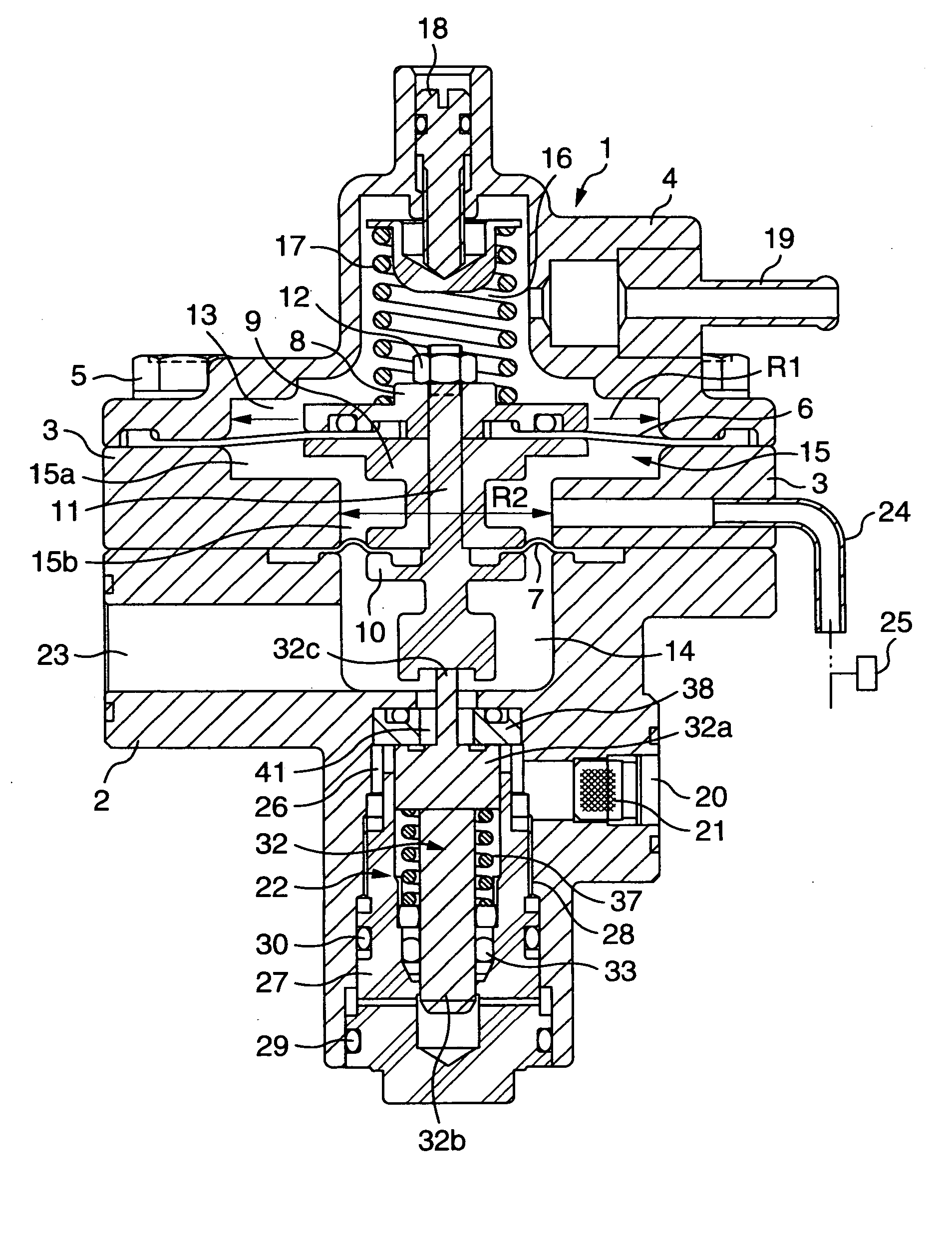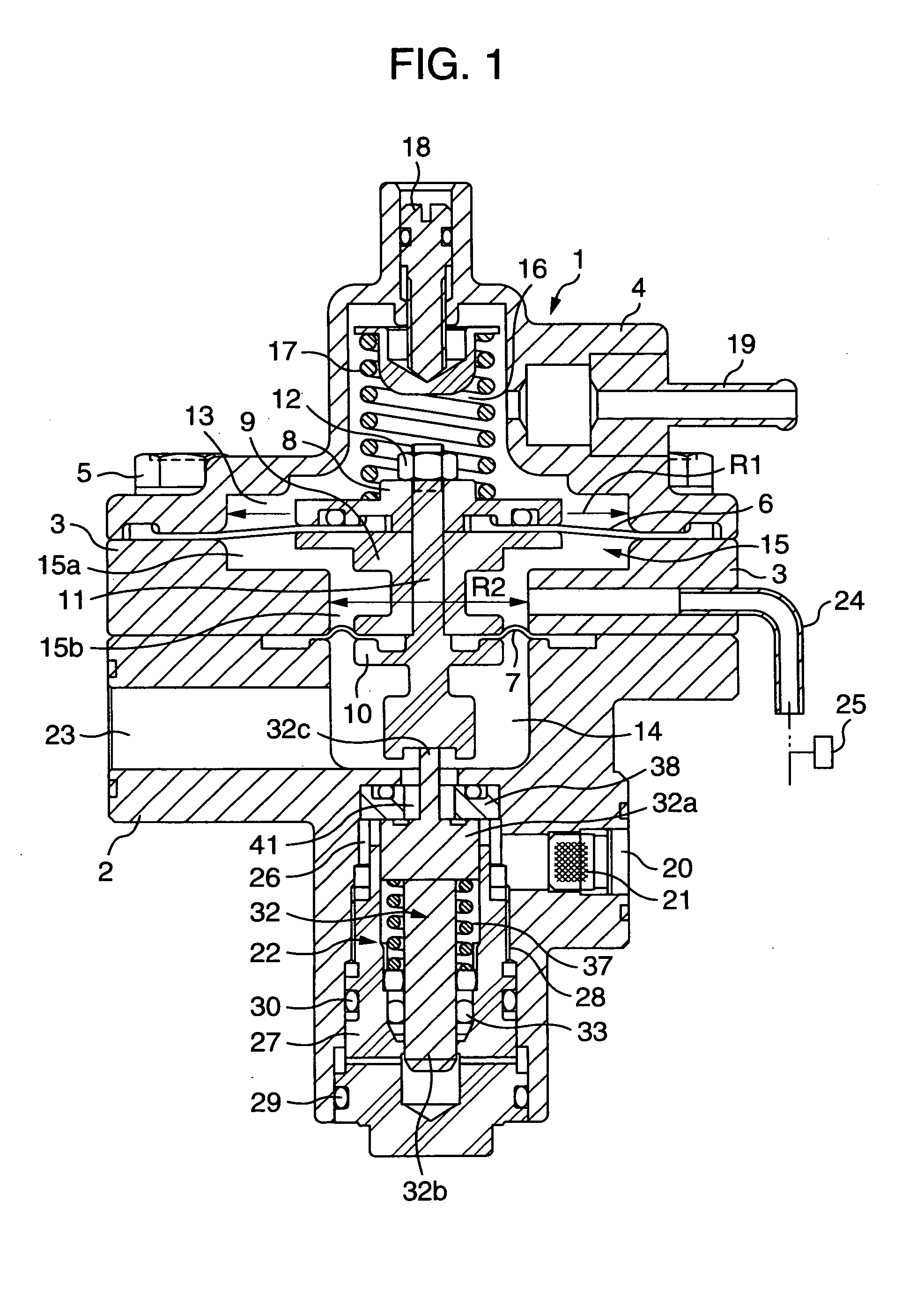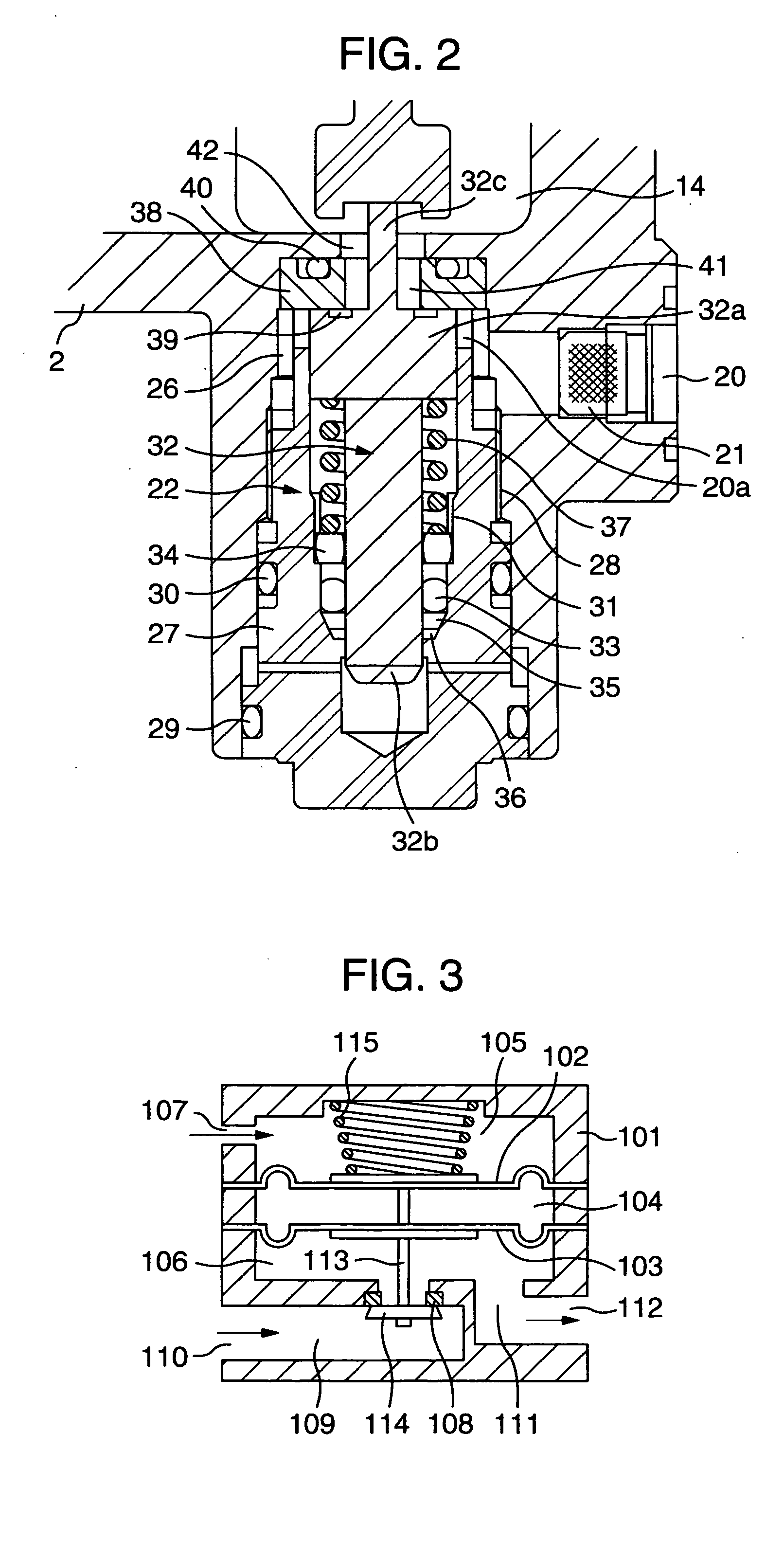Regulator for fuel cell systems
a fuel cell and system technology, applied in the direction of fluid pressure control, process and machine control, instruments, etc., can solve the problems of fuel cell performance deterioration, inability to supply hydrogen gas, etc., to reduce the size and cost of the valve mechanism, and reduce the overall size of the regulator and its cost
- Summary
- Abstract
- Description
- Claims
- Application Information
AI Technical Summary
Benefits of technology
Problems solved by technology
Method used
Image
Examples
Embodiment Construction
[0042]FIG. 1 shows a vertical sectional view of a regulator for fuel cell systems, which is a preferred embodiment of the invention.
[0043] Referring to FIG. 1, a regulator 1 has a lower body 2, an upper body 3 and a cover 4, and they are integrally linked with a bolt 5 and other elements.
[0044] Between the upper body 3 and the cover 4 arranged over this upper body 3, there is arranged a first diaphragm 6, which is the back pressure chamber side diaphragm, and the circumferential edge of the first diaphragm 6 is held between the upper body 3 and the cover 4.
[0045] Between the upper body 3 and the lower body 2 arranged underneath this upper body 3, there is arranged a second diaphragm 7, which is the pressure regulating chamber side diaphragm, and the circumferential edge of the second diaphragm 7 is held between the upper body 3 and the lower body 2. Therefore, the two diaphragms 6 and 7 constitute a double structure in which they face each other. Further, the diameter of the seco...
PUM
| Property | Measurement | Unit |
|---|---|---|
| pressure | aaaaa | aaaaa |
| pressure | aaaaa | aaaaa |
| area | aaaaa | aaaaa |
Abstract
Description
Claims
Application Information
 Login to View More
Login to View More - R&D
- Intellectual Property
- Life Sciences
- Materials
- Tech Scout
- Unparalleled Data Quality
- Higher Quality Content
- 60% Fewer Hallucinations
Browse by: Latest US Patents, China's latest patents, Technical Efficacy Thesaurus, Application Domain, Technology Topic, Popular Technical Reports.
© 2025 PatSnap. All rights reserved.Legal|Privacy policy|Modern Slavery Act Transparency Statement|Sitemap|About US| Contact US: help@patsnap.com



